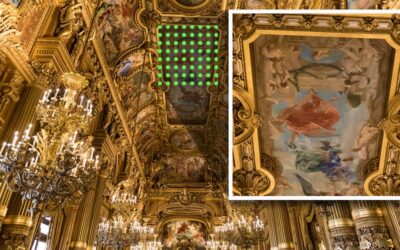How to Sell an Off-the-Shelf Museum CMS to Your Boss

Rachael Cristine Woody
This is the final post in the off-the-shelf museum CMS three-part series. You can catch the first two posts: Off-the-Shelf Museum CMS: When to Buy One and Where to Find One here, and What to Look for in an Off-the-Shelf Museum CMS here. If you’ve determined that an off-the-shelf museum CMS is the right choice for your museum, it’s now time to pitch it to your boss.
If you’re the registrar, educator, curator, conservator, archivist, etc., you’re the subject-matter expert. You may even be the technical expert. Your boss—more often than not—is not a subject matter expert, and rarely is a technical expert. That means it’s entirely up to you to communicate to your boss why a CMS is a good fit for your museum. While evidence of a CMS helping you do your job better is important, your boss also wants to hear how the CMS is a good choice for the museum as a whole. So, as you prepare your pitch make sure you cover all possible benefit angles to help sell the CMS choice to your boss.
Here are the Top 6 Things You Should Say to Sell an Off-the-Shelf Product to Your Boss:
- There’s a cost savings. Cost-savings is a huge perk and if the off-the-shelf CMS is cheaper than other options that’s a huge selling point. If it’s a better product but more expensive, make sure to explain that.
- There’s a personnel time and cost savings. After covering the product price tag, it’s time to address the personnel cost as it relates to the off-the-shelf CMS. Hopefully you’re choosing a CMS that will make your job easier, faster, and more effective. This should translate into a quantifiable time savings, and therefore cost-savings.
- It supports the museum’s mission. After money, is the mission. You know how your job contributes to the museum mission. Now extrapolate that out to define how the off-the-shelf CMS option supports the museum mission.
- The technical functions are impressive. While you want to be careful not to delve into too much technical detail, you should highlight some of the improved technical function of the off-the-shelf product. This is where show and tell will help you make your case by demonstrating a few cool new features to help you do your job, and help show off the museum collections.
- It beats the existing CMS. New and evolved CMS platforms are becoming easier and cheaper to acquire off-the-shelf. Make sure to highlight to your boss how the new CMS compares to the old CMS. Otherwise, they may wonder why you need a new one.
- You can install it quickly and easily. When switching to new products, and especially with a highly technical product like the CMS, your boss will worry about how long it will take to get the off-the-shelf CMS online and you back to work. Prepare for this point ahead of time by learning what’s required for installation. Fortunately, off-the-shelf products are made for quick deployment and you should be back to work in no time!
Conclusion
Make your boss’ job easier by giving them every reason to say “yes” to an off-the-shelf CMS of your choice. Do your research, make notes, and prepare the pitch with these six selling points.
For more on how to maximize the value of your CMS, please get your free e-copy of my book: How to Select, Buy, and Use a Museum CMS, courtesy of Lucidea Press.

Rachael Cristine Woody
Consultant, author, and blogger Rachael Cristine Woody advises on museum strategies, collections management and grant writing for a wide variety of clients. Learn about Lucidea’s Argus solution for museum collections management. And register here for Rachael’s next webinar on 9/30/20 where she’ll expand on topics related to buying and using an off-the-shelf CMS.
Never miss another post. Subscribe today!
Similar Posts
Captivating Story Delivery with a Multimedia Player
My recent posts reviewed how museums can use storytelling tools provided by their Collections Management System (CMS)—including zoom tools, slideshows, and flipbooks—as strategic storytelling aids. Each of these tools capitalize on being highly visual and offer...
How to Use Slideshows and Flipbooks to Offer Engaging Museum Story Visuals
Museums thrive on storytelling, and the right digital tools can make all the difference. Slideshows and flipbooks offer an engaging way to showcase collections, drawing visitors in with dynamic visuals and interactive elements.
Zooming Into Story Details:
How Museums Can Enhance Storytelling with Visual Tools
Visual tools such as zoom are crowd pleasers when presenting visual content online, allowing museums to create immersive and engaging digital experiences.
7 Digital Storytelling Elements That Live In Your Museum CMS
A museum’s Collections Management System (CMS) is more than just a catalog—it can also serve as a foundation for digital storytelling. By leveraging the rich object data and images already housed in the CMS, museum professionals can experiment with new ways to craft compelling narratives. In this article, Rachael Cristine Woody explores how different types of digital surrogates can bring museum collections to life online.




Leave a Comment
Comments are reviewed and must adhere to our comments policy.
0 Comments